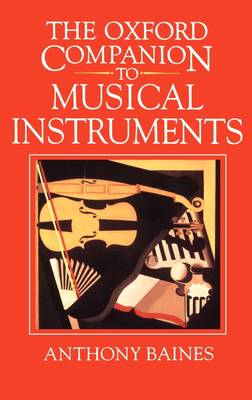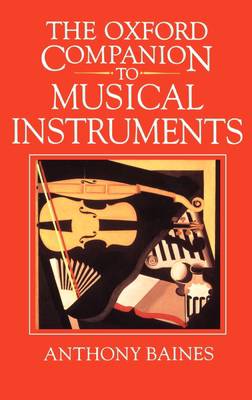
Bedankt voor het vertrouwen het afgelopen jaar! Om jou te bedanken bieden we GRATIS verzending (in België) aan op alles gedurende de hele maand januari.
- Afhalen na 1 uur in een winkel met voorraad
- In januari gratis thuislevering in België
- Ruim aanbod met 7 miljoen producten
Bedankt voor het vertrouwen het afgelopen jaar! Om jou te bedanken bieden we GRATIS verzending (in België) aan op alles gedurende de hele maand januari.
- Afhalen na 1 uur in een winkel met voorraad
- In januari gratis thuislevering in België
- Ruim aanbod met 7 miljoen producten
Zoeken
Omschrijving
Musical instruments, from the simplest pipes and drums to those of the utmost complexity, have formed an integral part of the cultures of all peoples of the world from the beginning of time. Their range and diversity have inspired the skill and genius of maker, composer, and player. This book is a celebration of that achievement, examining in one alphabetical sequence the astonishing variety of Western and non-Western acoustic musical instruments. Individual entries encapsulate the essential information about the instrument considered. Each entry offers a concise description and, with the aid of numerous line drawings, illustrates details of its construction. Playing techniques are also discussed and major entries draw attention to significant developments in the history of the instrument. Dr Baines also deftly conveys the sound of the instrument and highlights characteristic examples of its use within the orchestral repertoire or, for ethnomusicological instruments, within rites of passage. Musical examples elucidate these points and the whole text is beautifully illustrated with over one hundred photographs. There are general articles on the instruments of specific periods, such as the Renaissance or Baroque, and the instruments of individual continents are considered as an entity. Instruments are also treated by family (woodwind, etc.) and by other common groupings, such as orchestra, brass band. In addition the book deals with a whole range of related subjects, for example acoustics, pitch, chord symbols; methods of playing, such as harmonics, circular breathing; and also such topics as fakes and forgeries and oddities like walking-stick instruments. There is an Appendix of makers mentioned within the text and full bibliographical details are provided for the books and other sources cited. In all, this book bears witness to the author's lifelong passion for musical instruments in all their splendid variety and is distinguished by his elegant prose and scholarship.
Specificaties
Betrokkenen
- Auteur(s):
- Uitgeverij:
Inhoud
- Aantal bladzijden:
- 416
- Taal:
- Engels
Eigenschappen
- Productcode (EAN):
- 9780193113343
- Verschijningsdatum:
- 12/11/1992
- Uitvoering:
- Hardcover
- Formaat:
- Genaaid
- Afmetingen:
- 167 mm x 239 mm
- Gewicht:
- 734 g

Alleen bij Standaard Boekhandel
+ 424 punten op je klantenkaart van Standaard Boekhandel
Beoordelingen
We publiceren alleen reviews die voldoen aan de voorwaarden voor reviews. Bekijk onze voorwaarden voor reviews.









